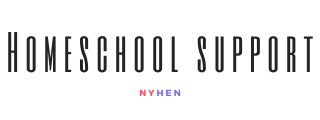Famous author John Steinbeck once said, “…to find out where you are going; you must know where you are”. Sometimes, finding out where we are and coming to terms with it is the most challenging part of creating a pathway that leads to a goal. This same concept applies to children and their learning path in genuinely reading and comprehending writing. Whether you are a homeschool parent or a teacher in the public school system, the very first thing you should do is establish a relationship of being there to help and then figure out where the child is.
How Often Should I Assess a Students’ Reading Ability and What Do I Do With the Data?
If students cannot read in English class, they cannot read their word problems, science textbook, or history lessons. It is just as simple as that. Not figuring out what level a child is at and then trying to teach them beyond where they can perform is the unfortunate reality of education today.
It’s Going to Hurt
There have been (at this point) hundreds of times where my students’ actual reading ability is far below where they think they are. I cannot stress enough that it is an injustice to a child not to tell them the reality of where they are because it will hurt their feelings. Now, I am not necessarily talking about younger children because they cannot comprehend the logistics of this. However, a fifteen-year-old student can comprehend the reality of only reading at a fifth-grade level.
The entire goal is so that either you, or you and the student, can create a schedule, create lessons, pick materials, and create goals together that will promote growth in their learning. There is nothing more satisfying than seeing a child improve and then watching their faces as they ACTUALLY are able to do things they weren’t able to do before.
What Tools Can I Use to Assess?
While there are many helpful and valuable products on the market with all the bells and whistles of assessment, I am more of a practical mom and teacher who likes to save money and only wants to use things that give me the brass tacks. I simply want the information straight and easy to understand. For this reason, I have used the program Read Theory for the last seven years!
Read Theory is a simple reading assessment program that gives you the grade level in which your child or student can comprehend text. The types of questions directly align with those that are asked on the ACT and ACT Aspire. The more a student uses this program, the more accurate the results.
How Do I Join and What Should I Look For?
All you have to do is sign up like you would with anything else. Click the “Sign Up” button, select whether you are a parent or teacher, create a password, and voila, you’re in! After you do this, you can create an account for your students or have them sign up with their school emails and give them a created class code to connect to you.
What ReadTheory Results Look Like to You
Here is a real example of what this will look like on your end. I love this free program because even if you have no clue as to what a Lexile Level is, you can still easily read that a child is on a specific grade level.
You can see a students’ quiz history, which tells you a lot! For example, when I see a student bouncing back and forth between two grade levels, I know that this is truly where they are in their reading comprehension ability. If a student scores high and then really low, I can tell that (for whatever reason) they are not operating at the total capacity that day. Also, students who score exceptionally far below where they should be can clue you in that there may be underlying issues, i.e., undiagnosed learning disabilities.
What Do I Do With the Information?
This is where it can get complicated! So now that there is all of this data, what do you do with it? If you see a student is consistently performing below where they should be, consider the following:
Give Them One-On-One Time and Set Goals
Sit down with the student and guide them in setting goals for themselves. For younger students, this may look like you giving them specific books to read and sitting down and talking about these books at different times. Maybe ask them, “How many books do you think you can read by…”, and have there be an extrinsic reward.
Older students (seventh grade and up) sit down with them and talk to them about their struggle with reading. Ask them what kinds of books they like and guide them to choose ones that will help them grow. Lastly, continue to re-assess every few weeks and teach them how to read their own scores! I have had MANY kids who want to “beat their score,” and that drive has them reading more on their own!
Differentiate Your Lessons
As a teacher, one more thing on my plate can make me feel a tad salty. However, when you use Read Theory, the hard part is already done! When I know where kids are at, I can group them differently, give varied projects with the same outcomes, and truly make personalized instruction.
Talk to Their Parent(s)!
This is probably the most challenging part of all of this: to share with the parents that a student is far below where they need to be. However, more learning happens in the home and with the support of parents than with just the teacher alone.
Final Thoughts
If our overall goal as educators is to help our students learn and grow, then we absolutely must understand where each one of them is at on all levels; socially, emotionally, and academically. We recognize the importance of considering the whole child in their learning process, and ReadTheory is a fantastic tool as a step in that process! How often you should assess reading ability depends on the circumstances. But the importance is that you do it.




